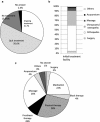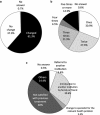Prevalence and characteristics of chronic musculoskeletal pain in Japan: a second survey of people with or without chronic pain
- PMID: 24504984
- PMCID: PMC3960485
- DOI: 10.1007/s00776-013-0525-8
Prevalence and characteristics of chronic musculoskeletal pain in Japan: a second survey of people with or without chronic pain
Abstract
Background: An epidemiological survey conducted in Japan in fiscal year 2010 revealed a high prevalence of chronic musculoskeletal pain, low patient satisfaction with treatment, a high incidence of protracted treatment lasting a year or more, and reduced quality of life. To improve the current system for treating chronic musculoskeletal pain, it is important to identify risk factors, including patient characteristics, for developing chronic pain. Thus, we sought to determine the incidence of new chronic pain in the Japanese population, as well as the persistence rate, associated factors, and current state of treatment of chronic pain, by repeating a postal survey in a nationwide representative sample group first surveyed in 2010.
Methods: Among 11,507 participants in the 2010 epidemiological survey, 1,717 reported chronic pain and 6,283 reported no chronic pain. A repeat questionnaire, mailed to subjects in these 2 groups in fiscal year 2011, received replies from 85 % of those who reported pain and 76 % of those without pain in 2010.
Results: The incidence of new chronic pain was 11.1 %. Risk factors for developing chronic pain included working in a professional, managerial, or clerical/specialist occupation, being female, having a BMI ≥25; currently using alcohol or cigarettes; and having completed an education level of vocational school or higher. Persistent chronic pain was reported by 45.2 % of respondents. Those with severe (VAS score ≥7) and constant lower-back pain lasting more than 5 years had the highest risk of the pain persisting. More than 80 % respondents with persistent chronic pain had a history of treatment, and while about 30 % were still receiving treatment at the time of the survey, the other 50 % had discontinued treatment despite the persistence of pain because of a low degree of satisfaction with treatment.
Discussion: We identified risk factors related to the development of new chronic pain and the persistence of chronic pain. Countermeasures to prevent chronic pain could be especially important for the high-risk populations for understanding the pathology of chronic pain.
Figures








References
-
- Annual Statistical Report of National Health Conditions. 2010/2011, Health and welfare statistics association, pp 72–3 (in Japanese).
-
- Kopec JA, Sayre EC. Work-related psychosocial factors and chronic pain: a prospective cohort study in Canadian workers. J Occup Environ Med. 2004;46:1263–1271. - PubMed
Publication types
MeSH terms
LinkOut - more resources
Full Text Sources
Other Literature Sources
Medical

